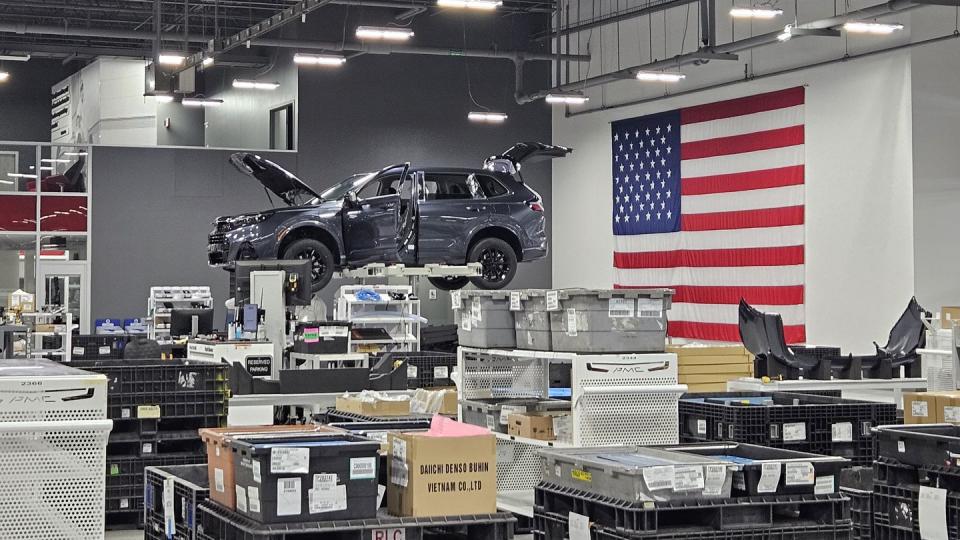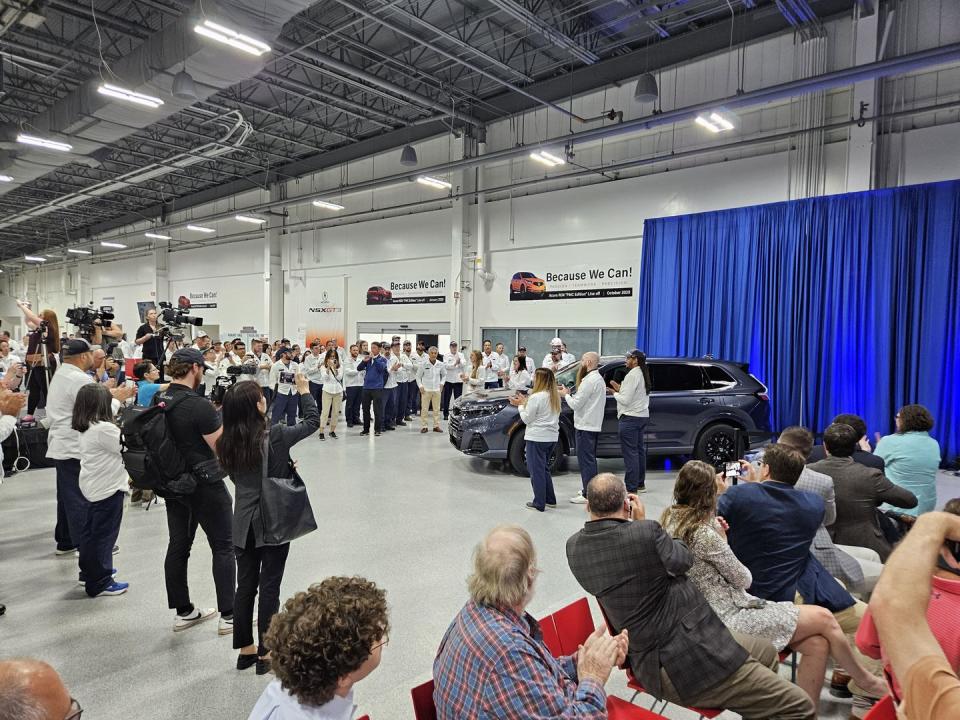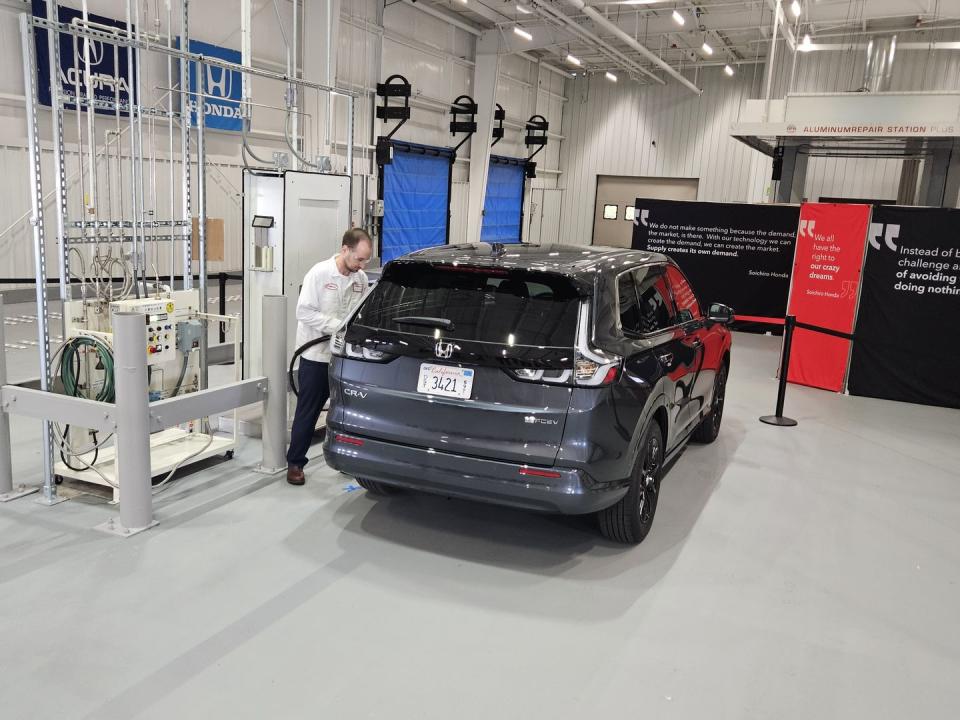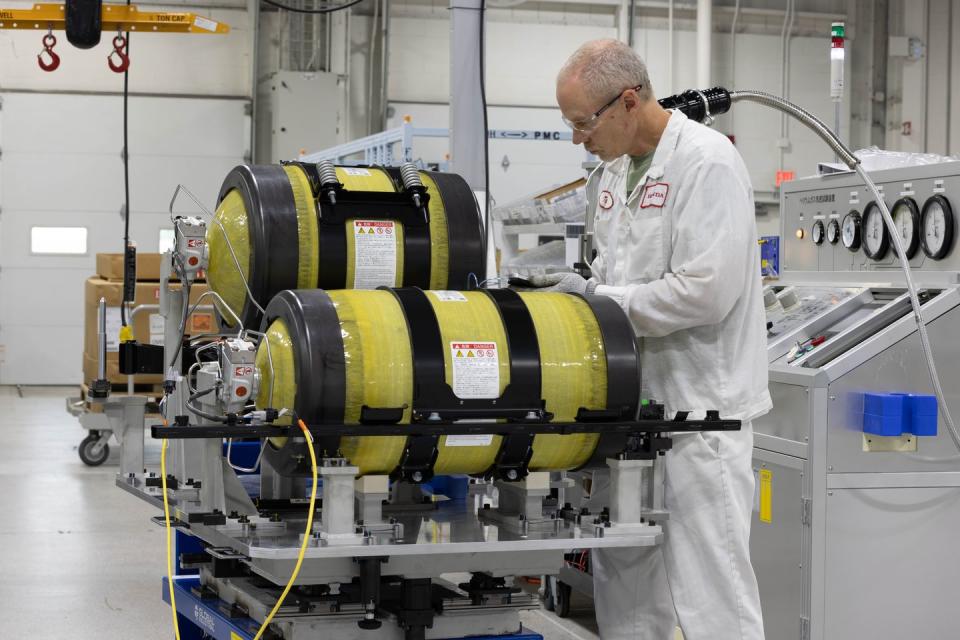Former Honda NSX Supercar Factory Transitions to Hydrogen CR-V Production

Honda launches production of the 2025 CR-V e:FCEV in the Performance Manufacturing Center that built the Acura NSX supercar hybrid until November 2022.
Honda isn’t specifying its first-year production plans for the CR-V e:FCEV, but count on it falling below 500 units. Honda is getting the fuel cells from the plant it jointly owns with General Motors in Brownstown Township, Michigan.
The automaker has configured this fuel-cell CR-V as a battery-electric hybrid with a plug. The EPA estimated overall range with a full tank of hydrogen is 270 miles, including 29 miles of all-electric range.
It’s easy to be skeptical about automakers that have been burning money for years in the pursuit of zero-emission vehicles powered by hydrogen fuel cells.
And yet Honda, Toyota, General Motors, Hyundai, and BMW are among those steadfastly focused on long-term powertrains that rely not on fossil fuels but on hydrogen, the most abundant element in the universe.
This week in Marysville, Ohio, Honda reinforced its hydrogen commitment by launching production of the 2025 CR-V e:FCEV in the Performance Manufacturing Center that built the Acura NSX supercar hybrid until November 2022.
No, a CR-V is not nearly as exciting as an NSX, but Honda still views this hydrogen-powered CR-V as perhaps an even greater technological achievement because of what it represents for a future in need of environmentally friendly mobility that is as practical as today’s many midsize crossovers.
The mainstream CR-V is far and away Honda’s most popular US vehicle, achieving more than 360,000 sales in 2023, so it makes sense it would underpin Honda’s strategic advancement in the fuel-cell market.
But this hand-assembled CR-V e:FCEV (built by 100 Honda associates, many of whom labored on the NSX previously) will represent a tiny sliver relative to the conventional CR-V that rolls out of the massive, highly automated plant in Greensburg, Indiana, by the tens of thousands.

Honda isn’t specifying its first-year production plans for the CR-V e:FCEV, but count on it falling below 500 units. Honda is getting the fuel cells from the plant it jointly owns with General Motors in Brownstown Township, Michigan.
During a production launch event at that Michigan plant earlier this year, Honda officials said the automaker would receive 2,000 fuel cells from the plant in 2024, and that 500 of them would go into the CR-V, while the remainder would be used for stationary power generators and for Mitsubishi semi-trucks and Isuzu mining rigs.
But this week in Marysville, some Honda sources told Autoweek the number of fuel cells dedicated for first-year CR-V production could fall as low as 300 units.
Odd as this might sound, a smaller number is likely better for the automaker’s bottom line, because the CR-V e:FCEV will be a money-losing proposition for Honda in the same way these vehicles have performed for all forward-thinking automakers over the years.
So, why does Honda travel this lonesome road? To curry favor with emissions regulators in California and because untold billions of yen have been invested in this technology.
Plus, based on a short test drive this week of the CR-V e:FCEV, hydrogen fuel cells truly deliver a drive experience that can be nearly as quiet and as rewarding as modern battery-electric vehicles that are approaching mainstream acceptance.
But there are two massive hurdles in the way.
The technology is expensive. The base 2024 Toyota Mirai XLE Fuel-Cell Sedan sells for $51,285 (with destination), and Car and Driver has said the CR-V e:FCEV pricing will be around $60,000.
Honda has not announced pricing yet, saying the hydrogen-powered crossover will be offered only in California for a three-year lease. Honda has selected 12 California dealers to handle the limited volume.
The other roadblock is a refueling infrastructure that for all practical purposes exists only in California, with about 70 publicly available stations to date. Ohio has just one hydrogen refueling station, and we saw it inside the assembly plant powering up the new CR-V.

Yes, the US government and companies such as Nikola are investing in hydrogen refueling stations elsewhere to allow Class 8 trucks to potentially drive coast to coast. But that reality is a long way off, and it’s unclear if those stations will allow for passenger-vehicle refueling at lower pressure levels.
The refueling challenge is apparent as Mirai owners recently filed lawsuits or called on Toyota to buy back their Mirais because the experience with their vehicles has been disappointing.
But Honda has a smart response to this quandary: They’ve configured this fuel-cell CR-V as a battery-electric hybrid with a plug. The EPA estimated overall range with a full tank of hydrogen is 270 miles, and that includes the 29 miles of all-electric range.
That’s not much, but it could be plenty meaningful when the hydrogen is running out, and that all-electric range can help you reach a functioning hydrogen refueling station.
Also, adding a mere 29 miles will not require DC fast charging or even a Level II charger. You could top off each night by plugging into a wall socket in your garage, assuming you have one.
A skeptic could also view this powertrain configuration as Honda’s admission that it will be easier to plug in the CR-V e:FCEV than bank on access to reliable hydrogen refueling.

There are advanced internal-combustion engines designed to run on hydrogen, but fuel cells do not rely on internal combustion, instead using a chemical process to convert hydrogen into electricity.
Whether that hydrogen is a “clean” source of energy is in question as well, as most of it today is derived from reformulated natural gas—a carbon-intensive process.
But the research continues toward readily available clean hydrogen, while Honda has invested $12.8 million to expand California’s refueling infrastructure as the automaker plans to achieve a 100% EV portfolio by 2040.
What is your level of interest in a hydrogen fuel-cell vehicle from Honda or another automaker? Please comment below.

 Yahoo Autos
Yahoo Autos 